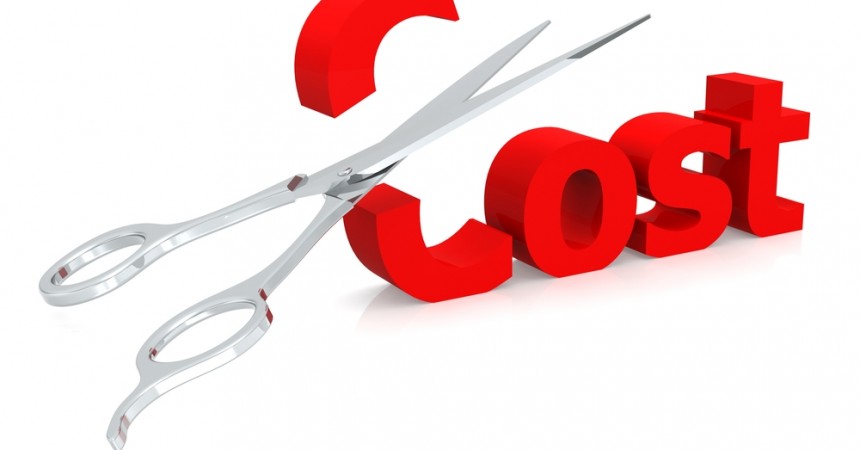The application of Lean RCM to Facilities Management & maintenance of public institutions
It’s the generation of cuts.
Tax credits, pensions, budgets, deficits; all being cut. Interesting to reflect how most of these cuts seem to apply to public services. Unprecedented times for public services as the current government tries to reduce the amount we, as a nation, spend on ourselves to an amount equal or below that which we earn. Seems fairly logical but at the same time reducing the large amount of money we have borrowed over the years as a result of spending more than we are. Not surprisingly, these cuts mean hard times for many and are never going to be popular with the masses.
Now for those of us familiar with the private sector, the concept of “cutting”, or, put in a more positive way; increasing productivity, is nothing new. In fact it is a necessity for survival. To quote one of the most inspirational and influential figures in modern day business; Edward Deming “Essential for long term survival is a rate of improvement that is sustained and superior to that of global competitors” W. Edward Demming, 1986.
The other concept the public sector is learning to live with is the idea that you have to generate more income than you spend – ask anyone in the private sector they will tell you this is the fundamental principle the raison-d’etre of business.
So how can we ease the pain? The answer is simple, by using the same tools and techniques and cultural adaptations that have been centrepiece to successful manufacturing businesses over the past 30 years. i.e. the concepts of Lean, Reliability and Change-readiness.
Of course, Lean is not new to public services. For quite some time, the National Health Service and Ministry of Defence have applied Lean manufacturing techniques to improve productivity and reduce costs with the essential services. The journey is far from complete as those of us who have had the opportunity to visit a modern automotive manufacturing facility and contrast that with the services offered by our National Health Service will testify.
Application of Reliability Best Practice to reduce costs
But what about Reliability Best Practice in the facilities management and maintenance of public service assets. While there have been many applications of Lean and many still ongoing, the application of best practice reliability techniques has generally been overlooked and overshadowed apart from in isolated cases. Let’s look at one isolated case and see what the learning points were; The Smithsonian Institution’s Reliability Centred Maintenance Approach.
The Smithsonian Institution (SI): 12 million square feet, 769 maintained facilities including 19 museums, 9 active research centres with laboratories and dormitories, state-of-the-art storage and restoration facilities, and venues for public and private gatherings.
RCM was developed by the airline industry in 1978 to reduce the cost of their strategy of periodic overhaul coupled with costly repairs and to improve reliability and safety. Airlines found that performing maintenance, just because the calendar says you should, did not improve safety or reliability, and in some cases introduced more failure. Instead they developed what is now called RCM. Other industries quickly adopted RCM after noting its success with the airlines.
Some of the key benefits that the Smithsonian Institute gained from the application of RCM were:
- Reduced overtime spent on repairs of failed equipment
- Increased asset reliability
- PM optimisation; performing PMs when test conditions indicate instead of when the manufacturer thinks they should
- Reduced maintenance backlog
- A more knowledgeable, better trained, and efficient maintenance staff
- Improved energy efficiency
- Measurable financial savings
Where are the opportunities for applying Reliability Best Practice and reducing costs?
An un-tapped goldmine of opportunity exists in large institutions and organisations within several public services sectors such as:
- Education-Universities and colleges (I was amazed to learn recently that the University of the West of England has 4000 employees making it compatible with the very large industrial organisation)
- Hospitals-now the generation of the super hospital reliability is becoming more and more essential requirement
- Central and Local Government Offices and departments – did you realise that the public sector comprises of 2.7 million people working in central government, 2.4 million working in local?
- Corporate offices and headquarters – according to some data I found, Google has over 11,000 employees located in its headquarters
So where there are people there is equipment and facilities to keep these people safe, comfortable and service their requirements and therefore an opportunity to reduce the maintenance costs associated with this equipment whilst improving reliability of the service it provides.
How should these institutions and organisations move forwards to take this opportunity?
This is not simply pick up the textbooks and get on with it. If it was that simple then all of these organisations would have grasped this opportunity many years ago.
No, this is a journey and the journey requires the people to be on board to take ownership of the tools and techniques and realise the benefits. Only by involving these people in the journey will you create long-term sustainable benefits.
Step by step guide
- Do a pilot, demonstrate that it works and delivers benefits in your organisation
- Create and deliver the strategy that makes the new way of working custom and practice within your organisation
- Develop the skills and competencies within your organisation to be able to apply the processes and its continuous improvement for the long term
Source: fmlink.com/articles/the-smithsonian-institutions-reliability-centered-maintenance-approach/
Share:
